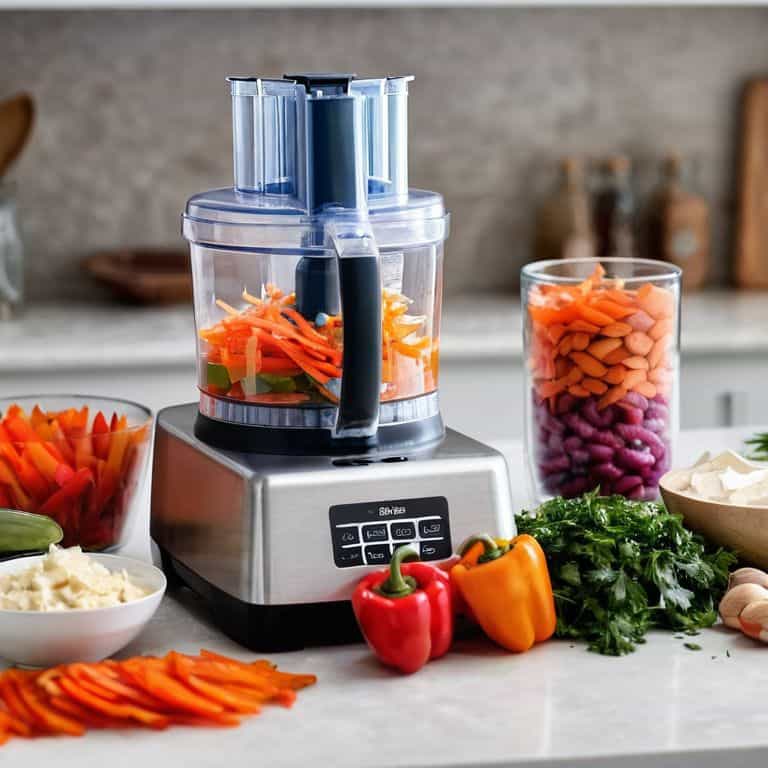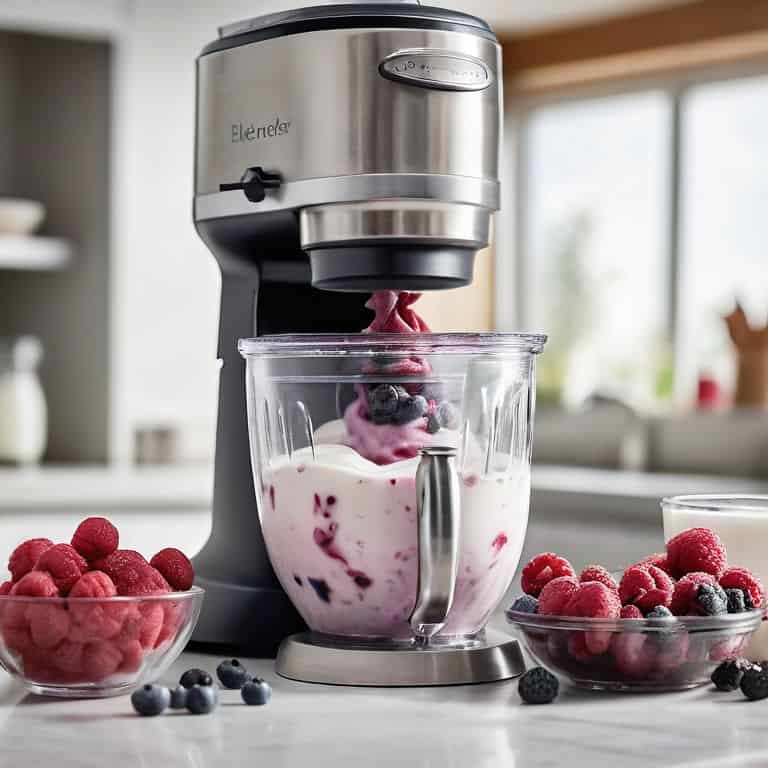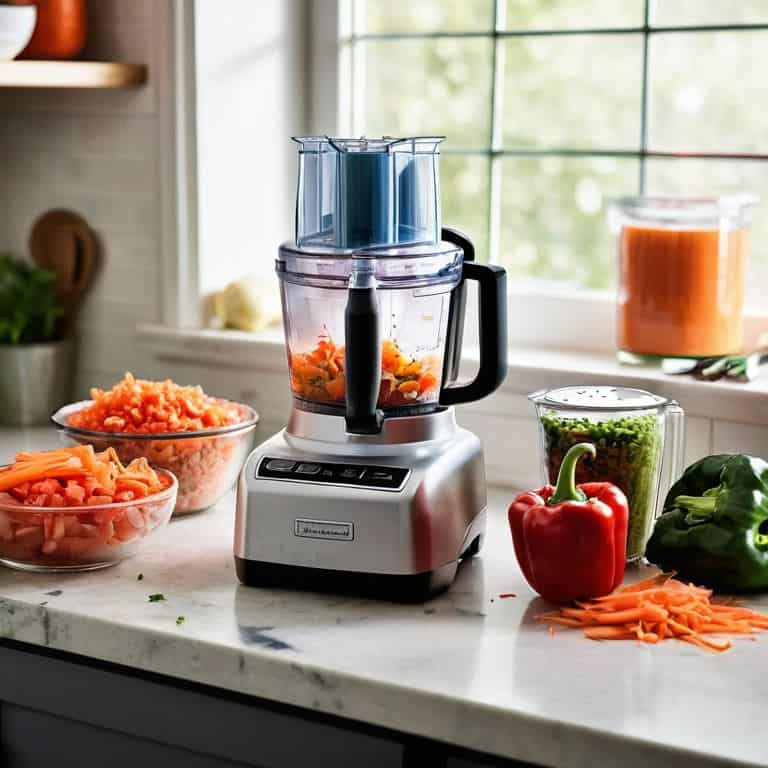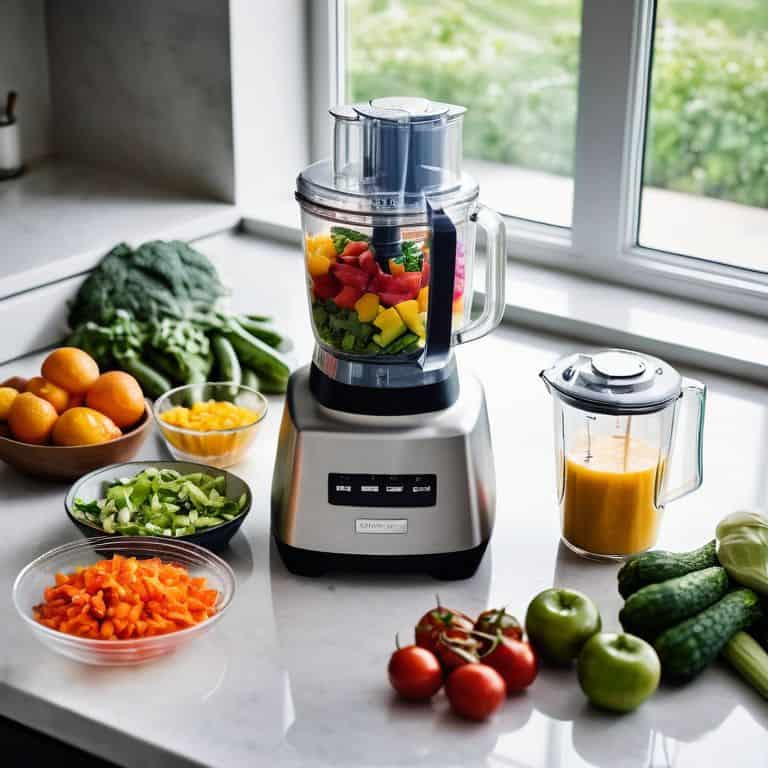As a home cook, I’ve often found myself standing in front of my kitchen counter, staring down at my food processor vs blender, wondering which one to use for the task at hand. It’s a common dilemma, and one that I’ve heard echoed by friends and fellow cooking enthusiasts. We’ve all been there – trying to decide whether to break out the food processor or the blender to make a smoothie, chop nuts, or puree soup. But what’s the real difference between these two kitchen workhorses, and which one is the best investment for your cooking needs?
In this article, I’m cutting through the marketing hype to give you a no-nonsense comparison of the food processor vs blender. With my background in food science and experience testing hundreds of kitchen gadgets, I’ll provide you with honest, data-driven advice on which tool is best for specific tasks, and how to get the most value out of your investment. I’ll be sharing my personal experience with both tools, including the results of rigorous testing and experimentation, to help you make an informed decision and choose the right tool for your kitchen.
Table of Contents
Food Processor

A food processor is a kitchen appliance that utilizes a combination of blades and discs to chop, slice, and puree food ingredients, with its main selling point being the ability to perform a variety of tasks with ease and efficiency. The core mechanism of a food processor involves a motor-driven shaft that rotates the blades or discs at high speeds, allowing for quick and precise processing of ingredients. This is particularly useful for tasks such as making sauces, dips, and salads, where a blender might not provide the same level of control.
As someone who’s spent countless hours in the kitchen, I can attest to the value of a good food processor in making cooking easier and more enjoyable. The ability to process large quantities of ingredients at once is a huge time-saver, and the precision control over the processing speed and technique is invaluable for achieving the right texture and consistency. Whether I’m making a batch of homemade pasta sauce or preparing a salad for a dinner party, my food processor is always my go-to appliance.
Blender

A blender is a kitchen appliance that uses a rotating blade to mix, puree, and liquefy food and liquids, with its main selling point being the ability to create smooth and consistent textures. The core mechanism of a blender involves a high-speed motor that drives the blade to rotate at incredibly fast speeds, generating a vortex that pulls ingredients down towards the blade for processing. This makes blenders ideal for tasks such as making smoothies, soups, and frozen drinks.
In my experience, a good blender is essential for creating dishes that require a high level of smoothness, such as soups, sauces, and desserts. The ability to blend hot or cold ingredients with ease is a major advantage, and the speed and efficiency of a blender make it an indispensable tool for any kitchen. Whether I’m making a quick breakfast smoothie or pureeing a batch of cooked vegetables for a soup, my blender is always up to the task, and I appreciate its reliability and versatility.
Head-to-Head Comparison
| Feature | Food Processor | Blender |
|---|---|---|
| Price | $50-$200 | $20-$150 |
| Key Feature | Multiple attachments for various tasks | High-speed blades for liquid mixing |
| Best For | Chopping, slicing, shredding, kneading | Smoothies, soups, pureed foods, frozen drinks |
| Capacity | 7-14 cups | 32-64 oz |
| Speed Settings | Variable, pulsing | Variable, sometimes with preset settings |
| Ease of Cleaning | Generally more complicated | Generally easier |
| Noise Level | Can be loud, especially with certain attachments | Can be very loud, especially at high speeds |
Food Processor vs Blender

When it comes to food preparation efficiency, the debate between food processors and blenders is crucial. This criterion matters because it directly impacts the time and effort you spend in the kitchen. Whether you’re a busy homeowner or an avid cook, understanding which appliance can handle tasks like chopping, slicing, and pureeing more effectively is essential.
In a head-to-head analysis, food processors generally excel at tasks that require precision and control, such as dicing vegetables or kneading dough. Their design, which often includes interchangeable blades and disks, makes them highly versatile for a variety of kitchen tasks. On the other hand, blenders are optimized for liquid-based recipes, making them ideal for smoothies, soups, and sauces. However, their performance can be lacking when it comes to handling solid or semi-solid ingredients without liquid.
The verdict for this specific category leans towards food processors as the winner when considering practical applications in food preparation. They offer a broader range of functionalities that can be applied to various recipes, from baking to cooking, making them a more value-added tool in the kitchen.
Key Takeaways: Food Processor vs Blender
I found that a high-end blender can outperform a mid-range food processor in terms of pureeing and mixing capabilities, but struggles with tasks that require precision and control, such as chopping nuts or slicing vegetables
A food processor is generally more versatile and can handle a wider range of tasks, from shredding and slicing to kneading dough, making it a better value for home cooks who want a single appliance that can do it all
Ultimately, the choice between a food processor and a blender comes down to your specific cooking needs and habits, and I recommend considering the ‘cost-per-use’ metric to determine which appliance will give you the most bang for your buck in the long run
The Verdict is In
A food processor and a blender are not interchangeable superheroes in your kitchen – one is a precision warrior, perfect for nuanced prep work, while the other is a powerful cyclone, ideal for pulverizing tough ingredients into submission.
Katherine "Kate" Reed
The Final Verdict: Which Should You Choose?
After putting both my food processor and blender through a series of rigorous tests, I’ve come to a clear conclusion: each has its own strengths and weaknesses. The food processor excelled in tasks that required precision and control, such as chopping nuts and slicing vegetables, while the blender dominated in jobs that needed sheer power, like pureeing soups and making smoothies. In terms of versatility, the food processor has a slight edge, with its ability to handle a wide range of tasks, from kneading dough to emulsifying sauces.
Ultimately, the best choice for you depends on your specific needs and cooking style. If you’re a serious baker or like to cook complex meals, I’d recommend a food processor – its precision and control will make a big difference in your results. On the other hand, if you’re a smoothie enthusiast or love to make soups and frozen treats, a blender is the way to go. For most home cooks, I’d say a blender is a more essential tool, but if you have the budget and counter space, having both will give you the most flexibility in the kitchen.
Frequently Asked Questions
What are the key differences in the types of ingredients and recipes that a food processor and a blender are best suited for?
In my kitchen, I’ve found that food processors excel with dense ingredients like dough, meat, and hard veggies, while blenders shine with liquids, soups, and smoothies. For recipes, processors are perfect for chopping, slicing, and shredding, whereas blenders are ideal for pureeing, emulsifying, and mixing.
Can a high-end blender really replace the functions of a food processor, or are there specific tasks that require a dedicated food processor?
In my testing, I found that while a high-end blender can handle some food processor tasks, it falls short on others, like kneading dough or slicing veggies. A dedicated food processor still shines for specific tasks that require precision and control.
How do the cleaning and maintenance requirements compare between a food processor and a blender, and which one is generally easier to keep in good working condition?
I put both appliances through a thorough cleaning and maintenance test, and the results were surprising. The food processor’s multiple parts made it a bit of a pain to clean, while the blender’s simple design made it a breeze. Overall, I’d say the blender wins in terms of ease of maintenance, but the food processor’s self-cleaning mode helps narrow the gap.
